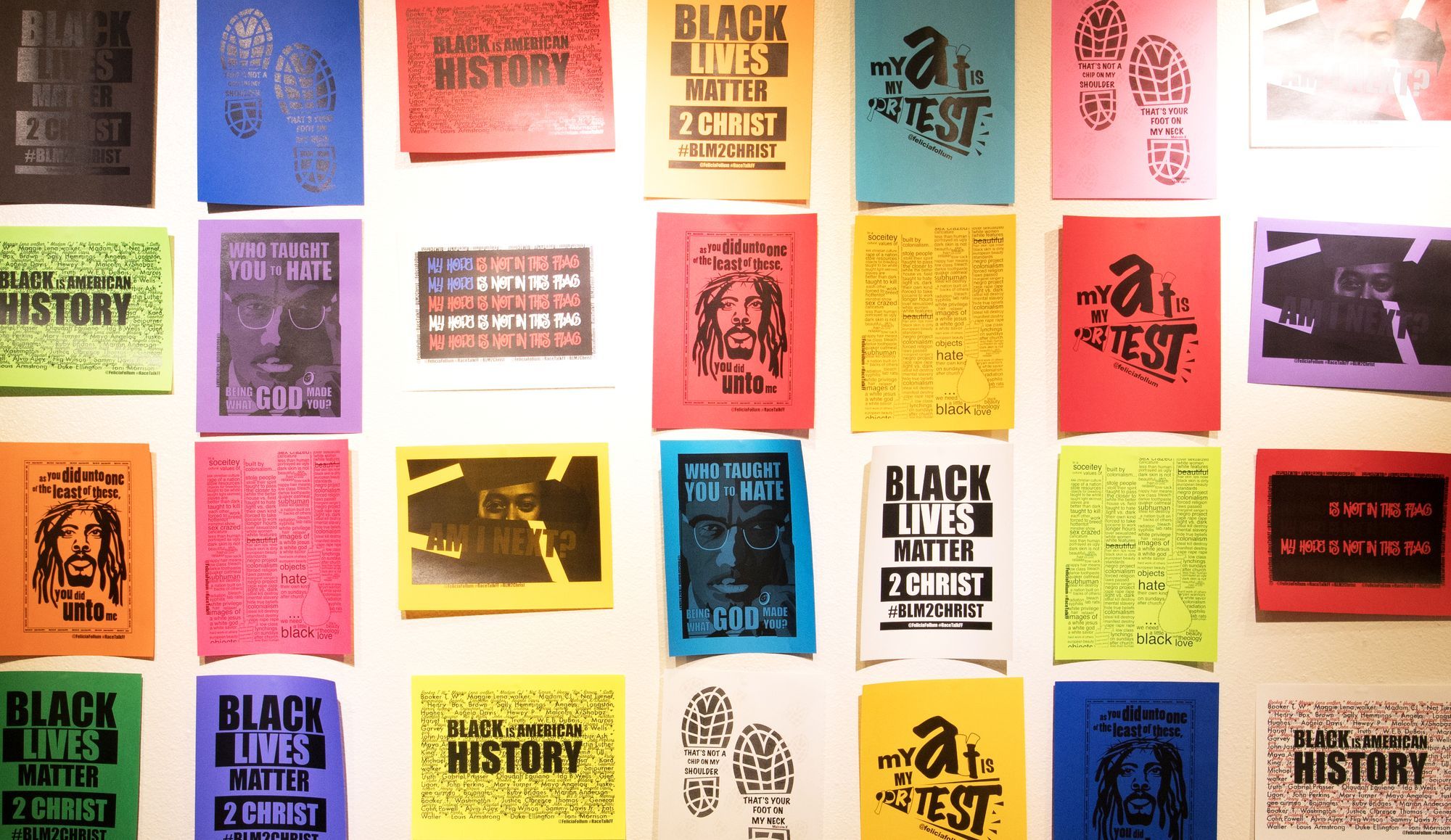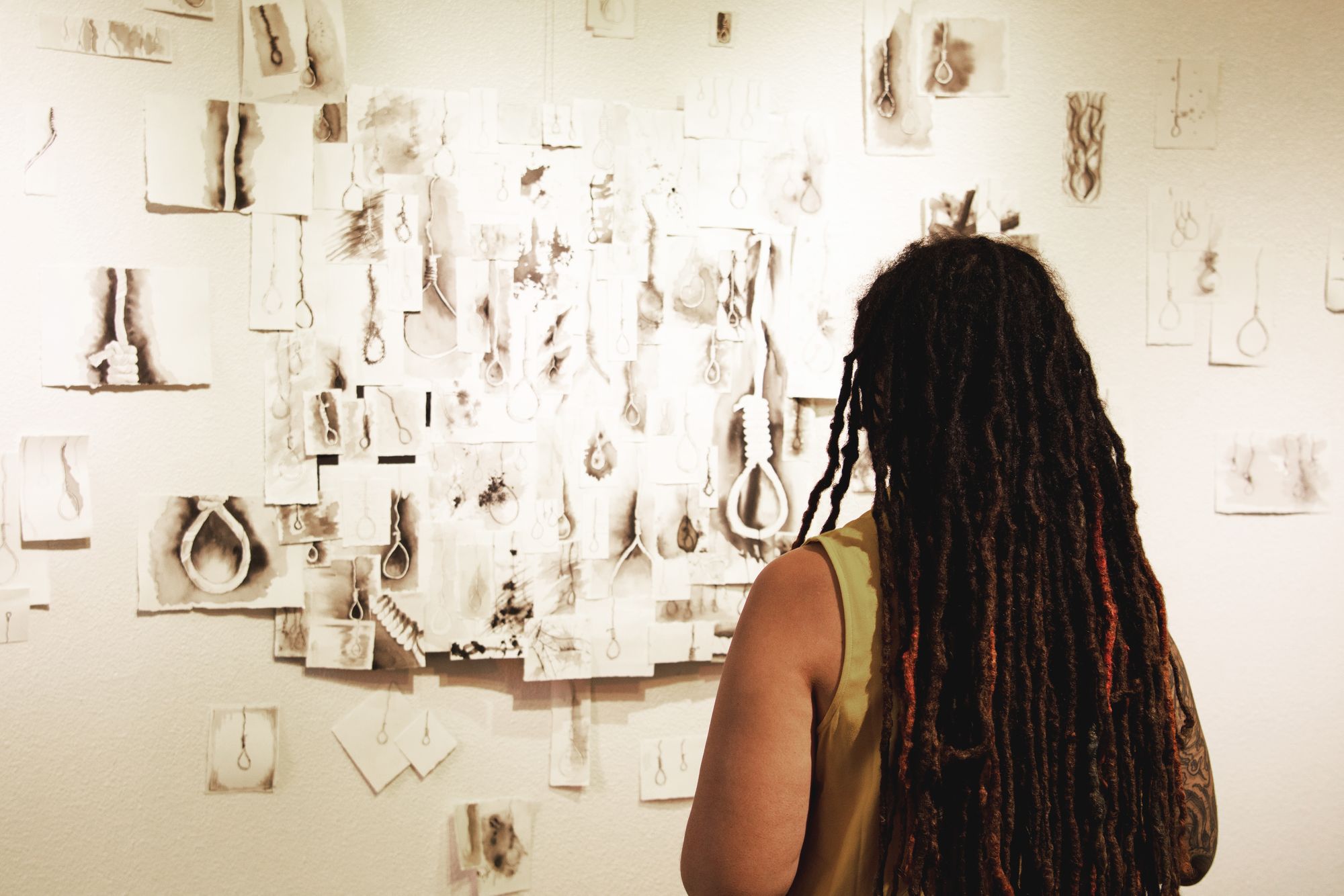This show has been in the works since January and is composed of work that is over ten years old as well as new work. As a whole, this exhibition is not a direct response to Black Lives Matter and current events, though I do believe it can help people understand what is going on and why people are upset. We are not angry about one man being shot. We are hurting from over 400 years of racism that our great-grandparents, grandparents, parents, and even our generation have experienced directly.
The goal of this exhibition is to communicate the brokenness that this country was built on, help people understand the darkness, and finally to help people process, lament, mourn, and work toward reconciliation.

The origin story of ‘Make It Plain’
‘Make it Plain’ was an art exhibition originally displayed in Laramie, Wyoming as a part of the Shepherd Symposium for Social Justice and as a thesis project combining my Art degree, Graphic Design minor, and my interdisciplinary major composed of African American Studies, Religious Studies, and Philosophy. ‘Make it Plain’ worked through African American history and Black liberation theology focusing on late Reconstruction and making the argument for the need for the Black churches in America.
Last fall, we had the opportunity to live in Richmond, Virginia for a few months. I worked online early mornings which left a chunk of time most days to explore the history of the East Coast. I walked the slave trails, went to the old gallows, slave jails, and even walked where old slave auction houses were. We toured historical sites, old churches, plantations, and museums, and saw a ton of old Confederate monuments. Also, Black street art and African American crafts were all around. I was overwhelmed with excitement and was always sketching.
Only a few people in Tri-Cities have seen a couple of pieces from the original ‘Make it Plain,’ but since returning from Virginia, I have been wanting to recreate the exhibition to include that experience.

My art is my protest and my plea!
The world is now talking about racism, and people are listening. Photographing the peaceful protests in Tri-Cities has been one way to document what has been happening. I have a hard time holding just one sign as there is no way for it to encompass all that I want to say. I don’t desire to yell and shake my fist (though those emotions are still there). I am much more interested in having dialogue and facilitating conversations and learning from those around me while we work toward change and reconciliation. That is what ‘Make it Plain: Part 2’ is all about.
I recognize that not everyone is ready for these conversations. I’m hoping that by starting this exhibition with two pieces on the Biblical explanation of where racism comes from will help ease some folks into the conversation. It begins by acknowledging the Biblical perspective that the world was created, and by chapter 3 of the first book of the Bible, humanity was already messing up. I hear the argument that, “racism is a sin problem” as being a reason that fighting against it won’t change things. And I agree it is a sin problem. But now that we can agree, let’s not use it as an excuse to ignore the problem; let’s address it head-on and speak out against it.
America was literally built on racism. ‘Make it Plain: Part 2’ takes us through Jim Crow and some specific stories. It then offers some of the beautiful aspects of African American history and culture.
Viewers are asked to lament, mourn, and remember our history but are also confronted with the hope that there will be dialogue and that people will be able to move forward and work toward racial reconciliation in their own lives and in this community.
It’s time for us to mourn
Some cultures have official mourning processes—periods of time when they must mourn after certain events. Americans are not used to this mourning, and we have never collectively mourned our history of racism. I do believe that this is part of the American race problem.
I invite anyone who views this show to be real and open. I want you to feel what you feel. Sit and stare at the darkness of American history. Journal and write your thoughts. Enjoy the beauty of African American culture. Cry, lament, mourn, scream, talk to friends about it. Respectfully share your thoughts. Challenge your friends to join you. Process and work through the pain in our American history so that we can make an effective change.
Content warning
‘Make it Plain’ is appropriate for all audiences, but may have some triggering themes. I invite people to process through the challenging emotions so that we can heal together. Feel free to message me to talk about the show more. I am now friends with a woman on Facebook who broke down in tears with me in the bathroom line of the DC art museum because she had never known our country’s history.
Don’t be afraid to break down. That is better than pretending racism doesn’t exist. It is better than pretending we don’t hurt or feel.
If you are in crisis, or need to talk to someone, I encourage you to text HOME to 741741 or call 1-800-273-8255.
The ‘Make it Plain’ art exhibition will be at the Allied Arts Association: Gallery at the Park through October 31. The gallery is open Tuesday–Saturday from 12 to 4.
Learn more at galleryatthepark.org.


